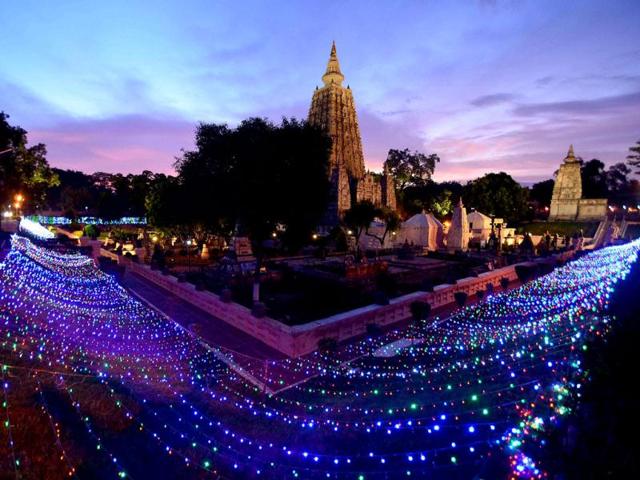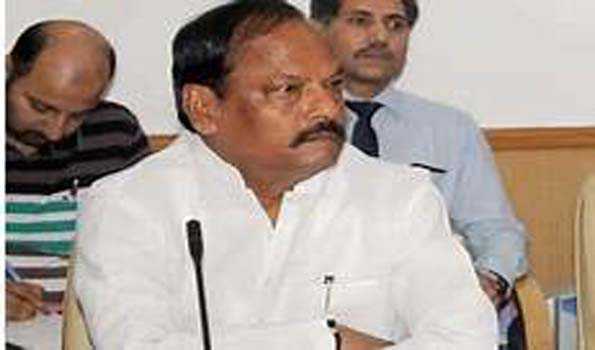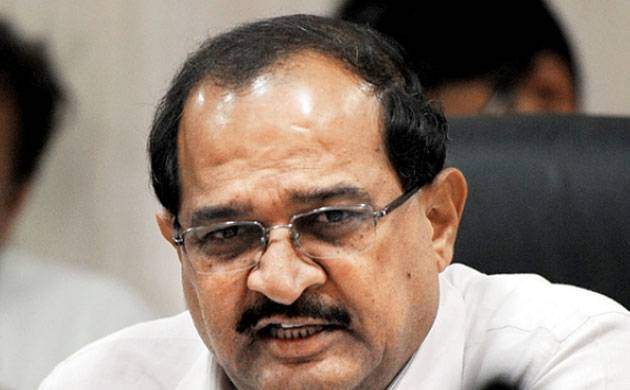Source: buddhistdoor.net
The Mahabodhi Temple in Bodh Gaya, India, one of the most sacred Buddhist sites in the world, will soon by illuminated by a state-of-the art LED lighting system by the end of this year, with funding for the extraordinary initiative offered by Siddhartha’s Intent India with support from Khyentse Foundation and Vana Foundation. The new lighting system is designed to illuminate every part of the temple in accordance with the highest safety and quality standards to ensure a long-lasting and sustainable solution.
The project, called “Lighting the Mahabodhi,” is one of the largest and most ambitious light-offering initiatives in Buddhist history. According to the Bhutanese newspaper Kuensel, Dzongsar Khyentse Rinpoche, founder of Khyentse Foundation, who initiated the lighting project, came up with the idea in 2015, and in 2017 the proposal was approved by the Bodh Gaya Temple Management Committee and the Gaya District Magistrate. The total cost of project is around US$1.4 million, with more than 30 per cent of the budget allocated since the project was launched.
“If there is one thing in the world that resembles our minds, it is light,” said Dzongsar Khyentse Rinpoche. “As Buddhists in the Rime tradition, our aim is to illuminate our minds free from judgment, prejudice, or pride. And so, it is to symbolize that realization and to appreciate the Buddha’s infinite compassion and skillful means in guiding us toward it, that we are now offering light at the very place of the Buddha’s enlightenment.” (Kuensel)
The Mahabodhi Temple, one of the most spiritual destinations for Buddhists pilgrims, is a UNESCO World Heritage Site marking the place where the Buddha is said to have attained enlightenment. Beside the temple, there are seven other sacred sites in Bodh Gaya, including the descendent of the original Bodhi tree.
“The atmosphere created by the Mahabodhi Temple is so potent it’s as if you fall into a trance,” explained Dzongsar Khyentse Rinpoche. “Here you’ll find the vajra seat (vajra asana, also known as the Diamond Seat) where, after many years of searching for the truth and six excruciating years of penance by the banks of the Niranjana River, Siddhartha finally discovered the Middle Path and achieved enlightenment under the Bodhi tree. (Khyentse Foundation)
“Centuries have passed since the Buddha attained enlightenment at this spot, and the temple has weathered many eras of both resplendence and shocking neglect. In this present era, the temple has been upgraded, is well tended to, and in comparatively excellent shape,” said the president of Siddhartha’s Intent India, Prashant Varma, in a press release on 31 May. “Lighting the Mahabodhi is building upon this support to update the lighting in a way that will last for generations to come. (Khyentse Foundation)
B-Lit, a lighting design company from Bangkok, Thailand, is providing the design offering free of charge as an offering of devotion. The overall lighting system will include high-end LED technology, as well as software to control and automate the myriad of high-efficiency, low-heat LED bulbs and fixtures.
According to the Khyentse Foundation, the lighting project will incorporate:
• Automated lights that are durable, energy efficient, and ecologically friendly, with minimal light pollution.
• Top technical quality lighting with systematised controls.
• Synchronized with the lunar cycles, and adaptable to the many special rituals and needs of the Mahabodhi Temple.
• Light fittings and fixtures able to withstand changing seasonal and weather conditions.
• Safe and easy operation and maintenance.
“We hope to have part of phase one—the core of the temple lighting—ready by the end of this year,” noted Varma. “We shall then steadily work toward completing all other areas of the temple complex, other than the Sarovar Lake and the new Meditation Park, by the end of 2020.” (Kuensel)





